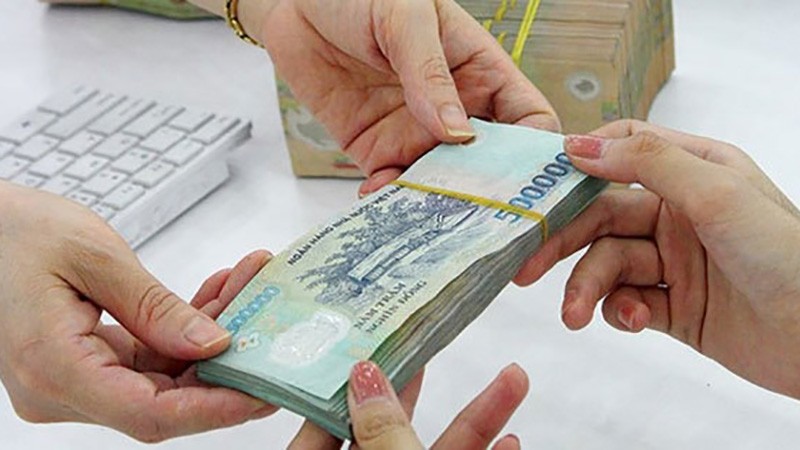 |
1. Salary reform roadmap according to Resolution 104/2023/QH15
Resolution 104/2023/QH15 on the 2024 state budget estimate was passed by the National Assembly on November 10, 2023.
Accordingly, the salary reform roadmap according to Resolution 104/2023/QH15 is as follows:
- From July 1, 2024, implement a comprehensive reform of the wage policy according to Resolution 27-NQ/TW dated May 21, 2018 of the 7th Conference of the 12th Central Executive Committee (Funding sources for wage reform are guaranteed from the accumulated wage reform source of the central budget, local budgets and a part arranged in the state budget balance expenditure estimate); adjust pensions, social insurance benefits, monthly allowances, preferential allowances for meritorious people and a number of social security policies currently linked to the basic salary.
- For central state administrative agencies and units implementing special financial and income management mechanisms:
+ From January 1, 2024 to June 30, 2024: The monthly salary and additional income are calculated based on the basic salary of 1.8 million VND/month according to a special mechanism ensuring that they do not exceed the salary and additional income received in December 2023 (not including the salary and additional income due to adjustments to the salary coefficient of the salary scale and grade when upgrading the grade and grade in 2024).
In case of calculation according to the above principle, if the salary and additional income in 2024 according to the special mechanism is lower than the salary according to general regulations, only the salary regime according to general regulations will be applied to ensure the rights of employees.
+ From July 1, 2024: Abolish all financial management and special income mechanisms of state administrative agencies and units; apply a unified salary, allowance and income regime.
Do not continue to apply the current special mechanism to the regular budget portion under the special financial management mechanism (operating expenses, capacity building, modernization, ensuring professional activities, etc.) of state administrative agencies and units. Assign the Government to organize implementation and report to the National Assembly at the 8th session.
- Ministries, central and local agencies continue to implement solutions to create sources for salary policy reform according to regulations. Allow to continue to exclude some revenue items when calculating the increase in local budget revenue for salary reform as prescribed in Clause 2, Article 3 of Resolution 34/2021/QH15 dated November 13, 2021 of the National Assembly.
2. Contents of salary reform according to Resolution 27-NQ/TW in 2018
Resolution No. 27-NQ/TW dated May 21, 2018 on reforming salary policy for cadres, civil servants, public employees, armed forces and employees in enterprises issued by the Central Executive Committee.
The content of salary reform according to Resolution 27-NQ/TW in 2018 is as follows:
* For cadres, civil servants, public employees and armed forces (public sector):
- Design a new salary structure including: Basic salary (accounting for about 70% of the total salary fund) and allowances (accounting for about 30% of the total salary fund). Additional bonuses (bonus fund equals about 10% of the total salary fund of the year, excluding allowances).
- Develop and promulgate a new salary system according to job positions, titles and leadership positions to replace the current salary system; convert old salaries to new salaries, ensuring they are not lower than current salaries, including:
+ Develop a salary table for positions applicable to cadres, civil servants, and public employees holding leadership positions (elected and appointed) in the political system from the central to communal level according to the following principles:
(1) The salary level of a position must reflect the rank in the political system; the salary of a leader holding a leadership position must be based on that position. If a person holds many positions, he/she will receive the highest salary level; if he/she holds equivalent leadership positions, he/she will receive the same salary level; the salary level of a superior leader must be higher than that of a subordinate leader;
(2) Prescribe a salary level for each equivalent position; do not classify ministries, branches, departments, committees and equivalents at the Central level when building the salary table for positions at the Central level; do not distinguish different salary levels for the same leadership position according to the classification of administrative units at the local level but implement it through the allowance regime.
The classification of equivalent leadership positions in the political system to design the salary table for positions is decided by the Politburo after reporting to the Central Executive Committee.
+ Develop a professional and technical salary table according to civil servant ranks and professional titles applicable to civil servants and public employees who do not hold leadership positions; each civil servant rank and professional title has many salary levels according to the following principles:
++ Same level of job complexity, same salary;
++ Working conditions are higher than normal and job incentives are implemented through job-based allowances;
++ Rearrange the groups of ranks and the number of ranks in civil servant ranks and professional titles of public employees, encourage public employees and civil servants to improve their professional qualifications and skills.
Appointment to civil servant ranks or professional titles of public employees must be linked to job positions and the structure of civil servant ranks and professional titles of public employees carried out by the agency, organization or unit managing civil servants and public employees.
+ Build 3 salary tables for armed forces, including:
++ 1 salary table for military officers, police officers and non-commissioned officers (according to position, title and military rank or grade);
++ 1 salary table for professional soldiers, police technical specialists and 1 salary table for defense workers and police workers (in which the salary correlation between armed forces and administrative civil servants is maintained as at present).
- Identify specific elements for designing the new payroll:
+ Abolish the current basic salary and salary coefficient, and establish a basic salary with a specific amount in the new salary table.
+ Unify the labor contract regime according to the provisions of the 2019 Labor Code (or service provision contracts) for those doing executive and service work (requiring training level below intermediate level), not applying the salary scale of civil servants and public employees to these subjects.
+ Determine the lowest salary level of civil servants and public employees in the public sector as the salary level of those doing jobs requiring intermediate training (level 1) not lower than the lowest salary level of trained workers in the business sector.
+ Expand the wage relationship as a basis for determining specific wage levels in the payroll system, gradually approaching the wage relationship of the enterprise sector in accordance with State resources.
+ Complete the regular salary increase regime and early salary increase regime for cadres, civil servants, public employees and armed forces in accordance with the provisions of the new salary table.
- Rearrange current allowance regimes, ensuring that the total allowance fund accounts for a maximum of 30% of the total salary fund.
+ Continue to apply concurrent allowances; seniority allowances exceeding the framework; regional allowances; job responsibility allowances; mobility allowances; security and defense service allowances and special allowances for armed forces (army, police, and cryptography).
+ Combining preferential allowances by profession, responsibility allowances by profession and toxic and dangerous allowances (generally called allowances by profession) applied to civil servants and public employees of professions and jobs with higher than normal working conditions and with appropriate preferential policies of the State (education and training, health, court, prosecution, civil enforcement, inspection, examination, auditing, customs, forestry, market management,...).
Merge special allowances, attraction allowances and long-term work allowances in areas with especially difficult socio-economic conditions into work allowances in especially difficult areas.
+ Abolish seniority allowances (except for the military, police, and cryptography to ensure salary correlation with cadres and civil servants); leadership position allowances (due to salary ranking for leadership positions in the political system); allowances for party work and political-social organizations; public service allowances (due to being included in the basic salary); toxic and dangerous allowances (due to including working conditions with toxic and dangerous factors in occupational allowances).
+ New regulations on allowance regime according to administrative unit classification for commune, district and provincial levels.
+ Consistently allocate monthly allowances to non-professional workers at the commune, village and residential group levels based on the regular expenditure ratio of the People's Committee at the commune level; at the same time, stipulate the maximum number of non-professional workers at each type of commune, village and residential group level. On that basis, the People's Committee at the commune level shall submit to the People's Council at the same level for specific regulations on positions eligible for allowances in the direction that one position can undertake many tasks but must ensure the quality and effectiveness of the assigned work.
- Regarding salary and income management mechanism:
+ The head of an agency, organization or unit is allowed to use the salary fund and regular expenditure budget assigned annually to hire experts, scientists and people with special talents to perform the tasks of the agency, organization or unit and decide on the income payment level commensurate with the assigned tasks.
+ The head of an agency, organization, or unit shall develop regulations for periodic rewards for those under his or her management, linked to the results of the assessment and classification of each individual's level of work completion.
+ Expand the application of the pilot mechanism to a number of provinces and centrally-run cities that have balanced their own budgets and ensured sufficient resources to implement salary reform. Social security policies are spent on increasing average income by no more than 0.8 times the basic salary fund of cadres, civil servants and public employees under their management.
+ Public service units that self-insure regular and investment expenditures, or self-insure regular expenditures and state financial funds outside the state budget are allowed to implement a salary autonomy mechanism based on performance results like enterprises.
+ Public service units that partially self-insure regular expenses and public service units whose regular expenses are fully insured by the state budget shall apply the same salary regime as civil servants.
Actual salary paid is related to the job position and professional title of the civil servant, decided by the head of the public service unit on the basis of revenue (from the state budget and the unit's revenue), labor productivity, work quality and work efficiency according to the unit's salary regulations, not lower than the salary regime prescribed by the State.
* For employees in the enterprise:
- About regional minimum wage:
+ Continue to improve the policy on monthly regional minimum wages; supplement regulations on hourly regional minimum wages to increase the coverage of minimum wages and meet the flexibility of the labor market.
+ Adjusting the regional minimum wage to ensure the minimum living standard of workers and their families, in relation to factors of the labor market and socio-economic development (labor supply and demand, economic growth rate, consumer price index, labor productivity, employment, unemployment, business solvency...).
+ Improve the functions, tasks and organizational structure of the National Wage Council; add independent experts to the Council.
- Regarding salary and income management mechanism:
+ Enterprises (including 100% state-owned enterprises) are free to decide on their own wage policies (including salary scales, tables, and labor norms) and pay wages no lower than the minimum wage announced by the State and on the basis of collective labor agreements in accordance with production organization, labor organization, and enterprise capacity, and publicly at the workplace.
+ The State announces the regional minimum wage by month and by hour, the average wage in the market for occupations and supports the provision of labor market information, without directly intervening in the wage policy of enterprises. Enterprises and employees negotiate and agree on wages, sign labor contracts and pay wages linked to productivity and labor results. Enterprises and organizations representing employees negotiate and agree on wages, bonuses, and other incentives in collective labor agreements or in the regulations of enterprises. Strengthen the role and capacity of trade unions and the inspection and examination work of state management agencies.
- For state-owned enterprises
+ The State prescribes general principles for determining wages and bonuses for state-owned enterprises linked to labor productivity and production and business efficiency, aiming to ensure wage levels in the market.
Implement the assignment of salary expenses, including bonuses in the salary fund, linked to the tasks, production and business conditions, industry, and nature of the enterprise's operations; gradually move towards implementing the assignment of production and business tasks linked to the results and effectiveness of management and use of state capital of the enterprise.
+ Clearly distinguish the salary of the representative of state capital from the salary of the executive board; implement the principle that whoever hires and appoints will evaluate and pay the salary. The State regulates the basic salary, additional salary and annual bonus based on the scale, complexity of management and efficiency of production and business, and use of state capital for the representative of state capital. The basic salary is adjusted in accordance with the salary level of the domestic and regional markets.
Gradually move towards hiring independent members and paying the members and controllers from after-tax profits. The general director and members of the executive board work under a labor contract and receive salaries from the general salary fund of the enterprise, which includes controlling the maximum salary according to production and business results and the average salary of employees. Implement public disclosure of annual salaries and incomes of representatives of state capital and general directors of state-owned enterprises.
+ For enterprises performing market stabilization tasks assigned by the State, calculate and determine to eliminate costs to ensure the implementation of market stabilization tasks, as a basis for determining salaries and bonuses of employees and enterprise managers.
For public service enterprises, the State correctly and fully calculates salary costs in accordance with the market level into the costs and unit prices of public service products. The State implements income regulation policies to ensure harmony of interests between enterprises, managers, employees and the State.
Source


![[Photo] Hanoi morning of October 1: Prolonged flooding, people wade to work](https://vphoto.vietnam.vn/thumb/1200x675/vietnam/resource/IMAGE/2025/10/1/189be28938e3493fa26b2938efa2059e)



![[Photo] Keep your warehouse safe in all situations](https://vphoto.vietnam.vn/thumb/1200x675/vietnam/resource/IMAGE/2025/10/1/3eb4eceafe68497989865e7faa4e4d0e)
![[Photo] President of the Cuban National Assembly visits President Ho Chi Minh's Mausoleum](https://vphoto.vietnam.vn/thumb/1200x675/vietnam/resource/IMAGE/2025/10/1/39f1142310fc4dae9e3de4fcc9ac2ed0)









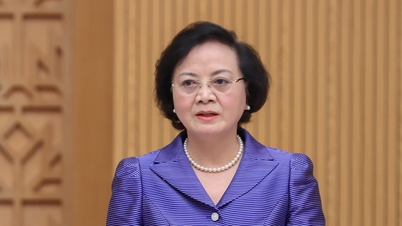




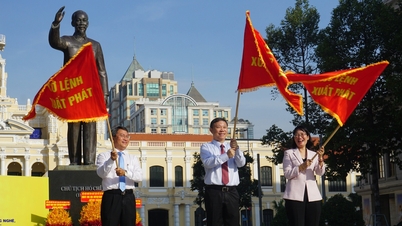



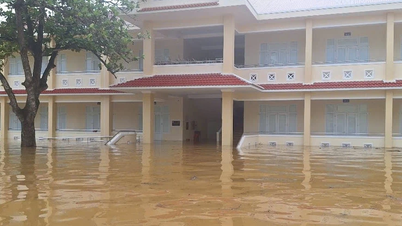






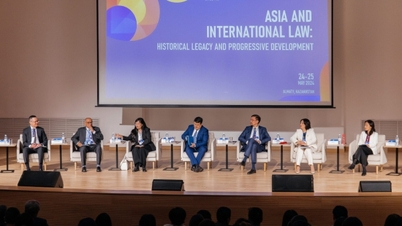
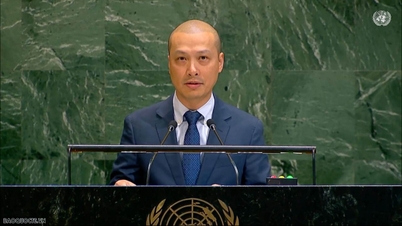
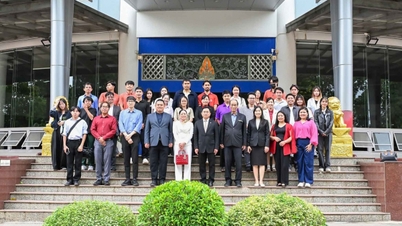

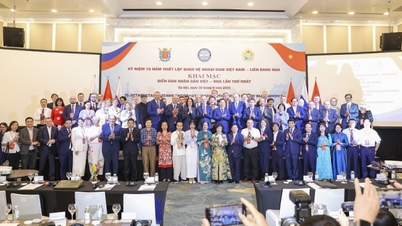
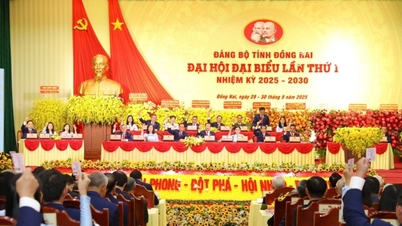







































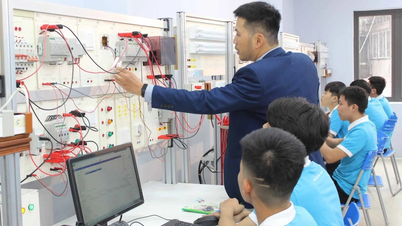




















Comment (0)